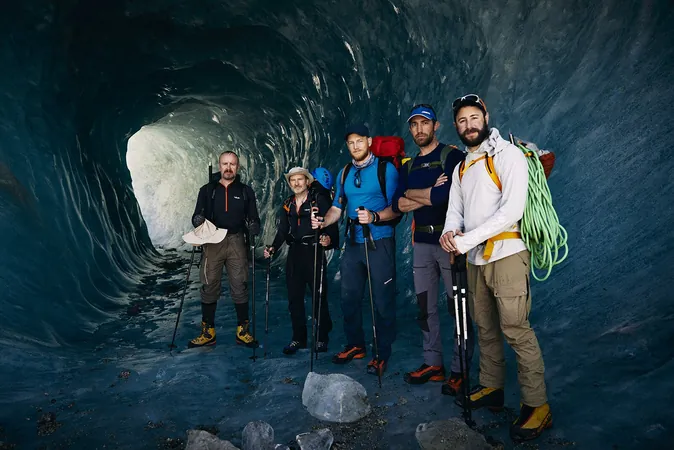
Alarming Discovery: Nanoplastics Found in Untouched Glaciers!
2025-01-20
Author: Emily
Introduction
Imagine gazing upon a majestic glacier, sparkling under the sunlight. Now, picture that pristine beauty tainted by tiny bits of plastic. A groundbreaking study has revealed just how deeply embedded plastic pollution is in even the most remote corners of our planet, shedding light on the alarming reality we face today.
Study Overview
In an innovative study recently published in Scientific Reports, a team of scientists has collaborated with trained mountaineers to collect samples of surface snow from otherwise inaccessible high-altitude locations. This citizen science approach highlights the critical role of mountaineers in uncovering environmental concerns.
Disturbing Evidence of Pollution
The research found nanoplastics at 5 out of 14 sampled glacier sites, with concentrations ranging from an unsettling 2 to 80 nanograms per milliliter of snow. The most frequently detected types of nanoplastics included tire wear particles (41%), polystyrene (28%), and polyethylene (12%). This study parallels earlier findings of microplastics in isolated environments across the globe, indicating that if microplastics are present, nanoplastics are likely there too.
Nanoplastics are especially concerning due to their small size and light weight, allowing them to hitch a ride on atmospheric currents. This means that even the most remote regions are not safe from the persistent reach of plastic pollution.
Tracing the Origins
One of the key researchers in this study, Nikolaos Evangeliou from NILU, employed a sophisticated Lagrangian dispersion model to trace how these harmful particles traveled from their sources to the glaciers. Astonishingly, the findings indicate that the primary sources are regions lying west of the Alps, including France, Spain, and Switzerland.
Evangeliou is not surprised by these findings, stating, “Our results underscore that micro- and nano-plastic pollution may be far more widespread than previously thought. Their diminutive size allows for extensive transport across vast distances, contributing significantly to global pollution.”
The Implications of Nanoplastics in Glaciers
The presence of nanoparticles in glacial ecosystems raises urgent concerns for scientists. These pollutants could disrupt delicate ecosystems, impact climate patterns, and pose risks to human health, particularly as they may contaminate water sources and enter food chains.
To tackle this escalating problem, researchers have initiated the Global Atmospheric Plastics Survey (GAPS). This ambitious project aims to construct a comprehensive understanding of the prevalence and danger of micro and nano-plastic pollution in the atmosphere worldwide.
GAPS is set to become one of the largest scientific and mountaineering expeditions ever, with 50 separate teams sampling critical high-altitude locations across the planet. Seven expeditions have already been completed, gathering crucial data from places such as the Tian Shan mountains in central Asia and the South Pole.
Why You Should Care!
As the reality of plastic pollution unfolds, it raises urgent questions about the future of our environment and our health. Nanoplastics, defined as particles less than 1 micrometer in size, primarily stem from the degradation of larger plastic debris. Understanding their distribution and effects is vital in combating this global crisis.
The truth is shocking—our seemingly pristine natural wonders are not immune to human activity. It's time to take action; we must rethink our relationship with plastic and strive towards a more sustainable future. What can you do to help turn the tide against plastic pollution? The future of our planet may depend on it!









 Brasil (PT)
Brasil (PT)
 Canada (EN)
Canada (EN)
 Chile (ES)
Chile (ES)
 Česko (CS)
Česko (CS)
 대한민국 (KO)
대한민국 (KO)
 España (ES)
España (ES)
 France (FR)
France (FR)
 Hong Kong (EN)
Hong Kong (EN)
 Italia (IT)
Italia (IT)
 日本 (JA)
日本 (JA)
 Magyarország (HU)
Magyarország (HU)
 Norge (NO)
Norge (NO)
 Polska (PL)
Polska (PL)
 Schweiz (DE)
Schweiz (DE)
 Singapore (EN)
Singapore (EN)
 Sverige (SV)
Sverige (SV)
 Suomi (FI)
Suomi (FI)
 Türkiye (TR)
Türkiye (TR)
 الإمارات العربية المتحدة (AR)
الإمارات العربية المتحدة (AR)